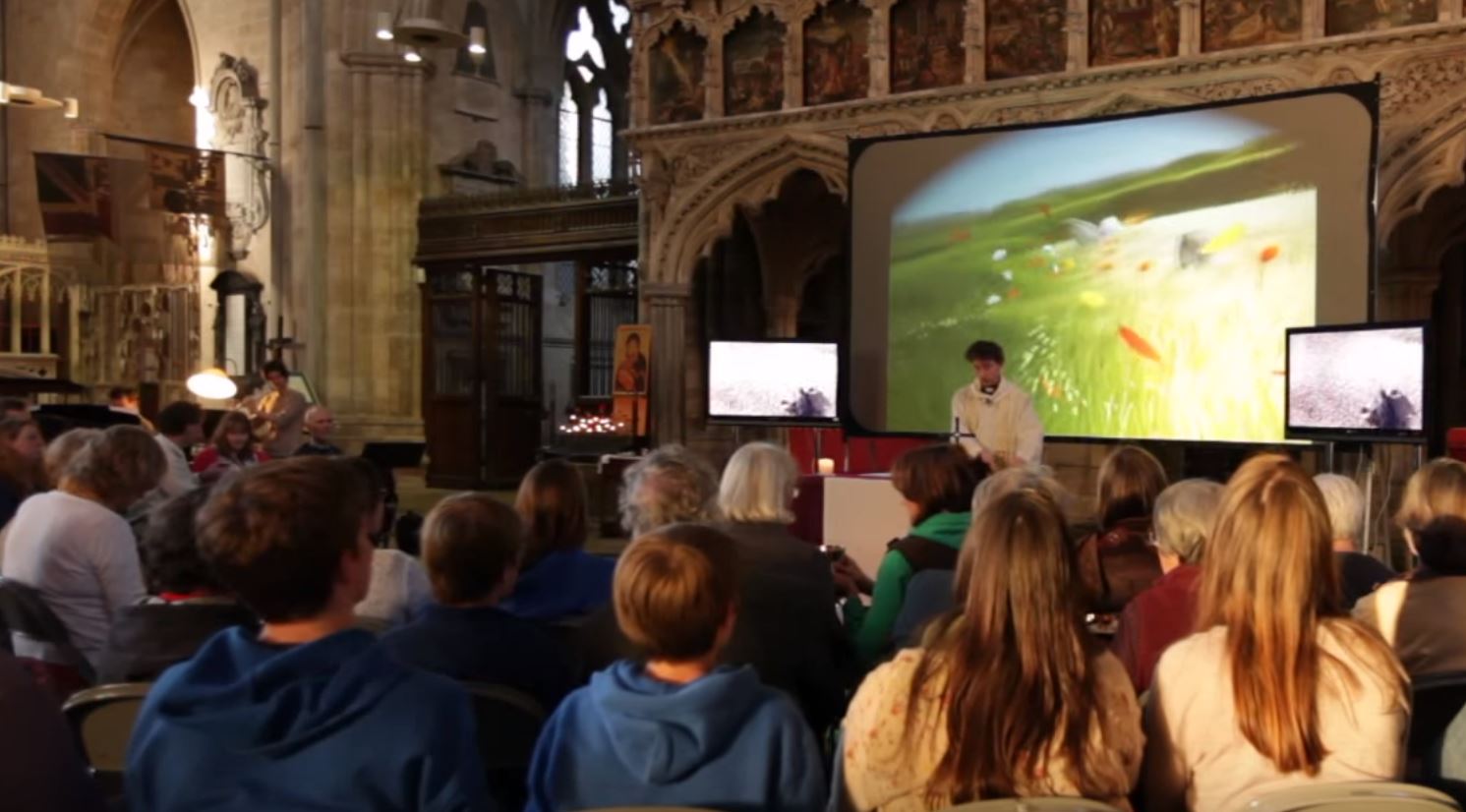Games as Lit: Flower, Part One
Nathan Rockwood
As the 2015-2016 school year draws to a close, I finally find myself with enough time to turn some of my notes on games I’ve used in class into readable after-action reports. I’m starting here with my first foray, Flower, and breaking this into two parts. This post will detail why I chose the game, including my reasons for considering it to be a piece of art and literature; the next post will cover technical implementation and results!
Flower, by thatgamecompany.
Why This Game?
The game Flower, by Thatgamecompany, was my first choice for playing games as literature with my 9th grade English class. It breaks from what many people think of as the norm for video games, having been created specifically to do so: There is no way to lose, there is little obvious challenge, and while progress can be made, the player is not given a stated goal at any time. Despite that, there is nonetheless an intentional exploration of a theme, which means there is plenty of content students can discuss academically. It is also a very short game with easily-learned controls, a play time potentially less than two hours, and beautiful animation and music.
Not that it is without shortcomings. Most importantly, as Flower contains no dialogue or spoken words, the game certainly strains even my definition of literature, unless you want to be pedantic about the fact that code is a form of writing (a conversation for another time). However, as my normal curriculum involves viewing and analyzing images and music, I simply chose to approach Flower as I would a piece of art or poetry that doesn’t obey the conventions of standard English.
In a fortunate twist, this potential problem made Flower an even better candidate for a technical trial run. The game functions well as a proof-of-concept that students can not only handle the added complication of setting up and breaking down Playstation 3s in class, but can also analyze the content of any video game, even one with no text. And, of course, a short game with no required reading is easily consumed by students, and was equally accessible to my students who read more slowly or with less fluency.
Background and Critical Responses
Flower is already at the center of some debates on the value of games as art. Critical reviews tend to be positive; it was featured in the Smithsonian’s The Art of Video Games exhibit, and then adopted into their permanent collection; one TEDx talk resulted in it being incorporated directly into a church service; and at least one other TED talk highlighted it in such a way that in/famous, and now late, film critic Roger Ebert personally dismissed it as of no more significance than a greeting card. Interestingly, the resulting backlash eventually led to a pseudo-retraction of his comments, though he intentionally stopped short of admitting that video games can be art, and said merely that he should never have broached the subject without doing his research.
And a little research on Flower provides plenty of reasons for me to treat it as art and literature. According to the developers (both on their website and in interviews), Thatgamecompany’s stated mission is “to create timeless interactive entertainment that makes positive changes to the human psyche.” Developer Jenova Chen explains that this lofty goal originated in an accidental result of their efforts to make new, fresh gameplay in their early college-years work. Later on, with Flower (and another title to receive mass acclaim, Journey), their vision had shifted. Now they focused on creating specific, positive emotional impacts on their audience, as well as expanding that audience to include even people who did not see themselves as ‘gamers.’
As those goals align very closely with my quest to attempt to teach games as art and literature, that seemed like an excellent point to launch into my first unit trial-run outside the ‘lab conditions’ of my Gamers’ Club, where students were guaranteed to be interested in gaming.
Onward! To 9th grade English!
Thanks for reading! In the second post, to follow next week: Logistics, student reactions, and so on!


